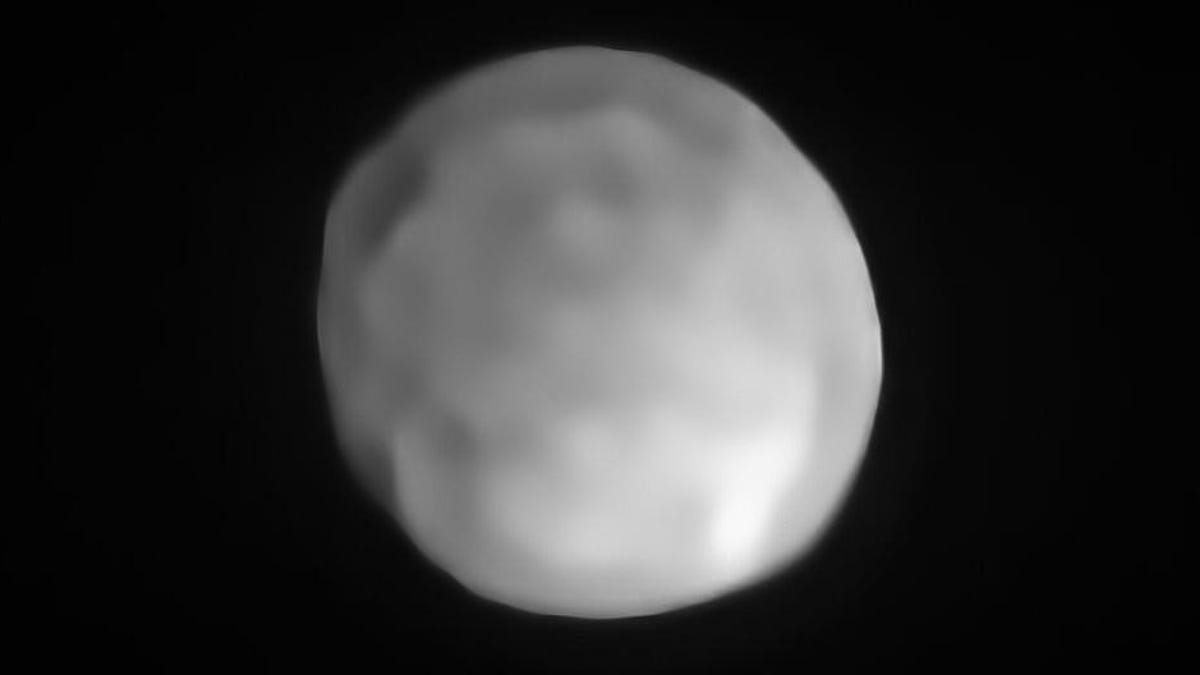Tiny, mysterious asteroid is likely the solar system's smallest dwarf planet
(10) Hygiea is classified as an asteroid... but maybe not for much longer.

Astronomers think (10) Hygiea could be reclassified as a dwarf planet -- which would make it the smallest such body in the solar system.
The fourth largest object in the asteroid belt, a space rock known as (10) Hygiea, has been something of a mystery for astronomers even though it was discovered over 170 years ago. Its dark surface and distance from the sun makes it hard to spot as it zips around the belt between Mars and Jupiter. A new study, using high-resolution Earth telescopes, has revealed Hygiea may not just be any old space rock, but a dwarf planet in its own right.
The study, published in the journal Nature on Oct. 28, observed (10) Hygiea with the SPHERE (Spectro-Polarimetric High-contrast Exoplanet REsearch) instrument attached to the European Southern Observatory's Very Large Telescope (VLT) in 2017 and 2018. Combining the observations with advanced numerical computations and modelling, the team was able to see the shape of Hygiea better than ever before.
Hygiea is believed to have formed after a huge cosmic collision around 2 billion years ago, which spewed rocks throughout the asteroid belt. Eventually, they reassembled into asteroid and (10) Hygiea. But this original impact, the team believed, would have left a huge impact crater on Hygiea's surface. Surprisingly, this was not the case.
"This result came as a real surprise as we were expecting the presence of a large impact basin, as is the case on Vesta," said Pierre Vernazza, astronomer at the Laboratoire d'Astrophysique de Marseille in France and first author of the study, in a press release. Vesta is the second-largest asteroid in the solar system. It was trailed by NASA's Dawn spacecraft in 2011.
Vernazza and colleagues didn't find evidence for the impact crater but the new vision of Hygiea shows a neat, rocky ball. The asteroid is much more spherical than previous observations suggested. That opens up the possibility it could be reclassified as a dwarf planet. To receive that lofty title, a cosmic object in our solar system has to satisfy four criteria:
- Orbits the sun
- Is not a moon
- Has not cleared its neighborhood
- Gravity has shaped it to be mostly spherical
Pluto was, controversially, reclassified as a dwarf planet by the International Astronomical Union in 2006. Even though NASA administrator Jim Bridenstine believes Pluto should still be classed as a planet, Pluto has not cleared its neighborhood of other debris and rocks and thus, doesn't get to be a real planet like Earth. The same can be said for Hygiea.
Pluto's pain, Hygiea's pleasure though. The new observations show Hygiea is highly spherical. In fact, it's almost as spherical as Ceres, the only other dwarf planet in the asteroid belt.
"Thanks to these images, Hygiea may be reclassified as a dwarf planet, so far the smallest in the solar system," said Vernazza.
While Hygiea should get ready to pop the champagne, this is unlikely to be the last time an asteroid finds itself celebrating a reclassification. And Hygiea may not even be able to hold on to the title of the smallest dwarf planet for long. As our optics get better on Earth and our modelling becomes more accurate, it's likely we'll find dwarf planets lurking throughout the solar system.
Originally published 8 a.m. PT

